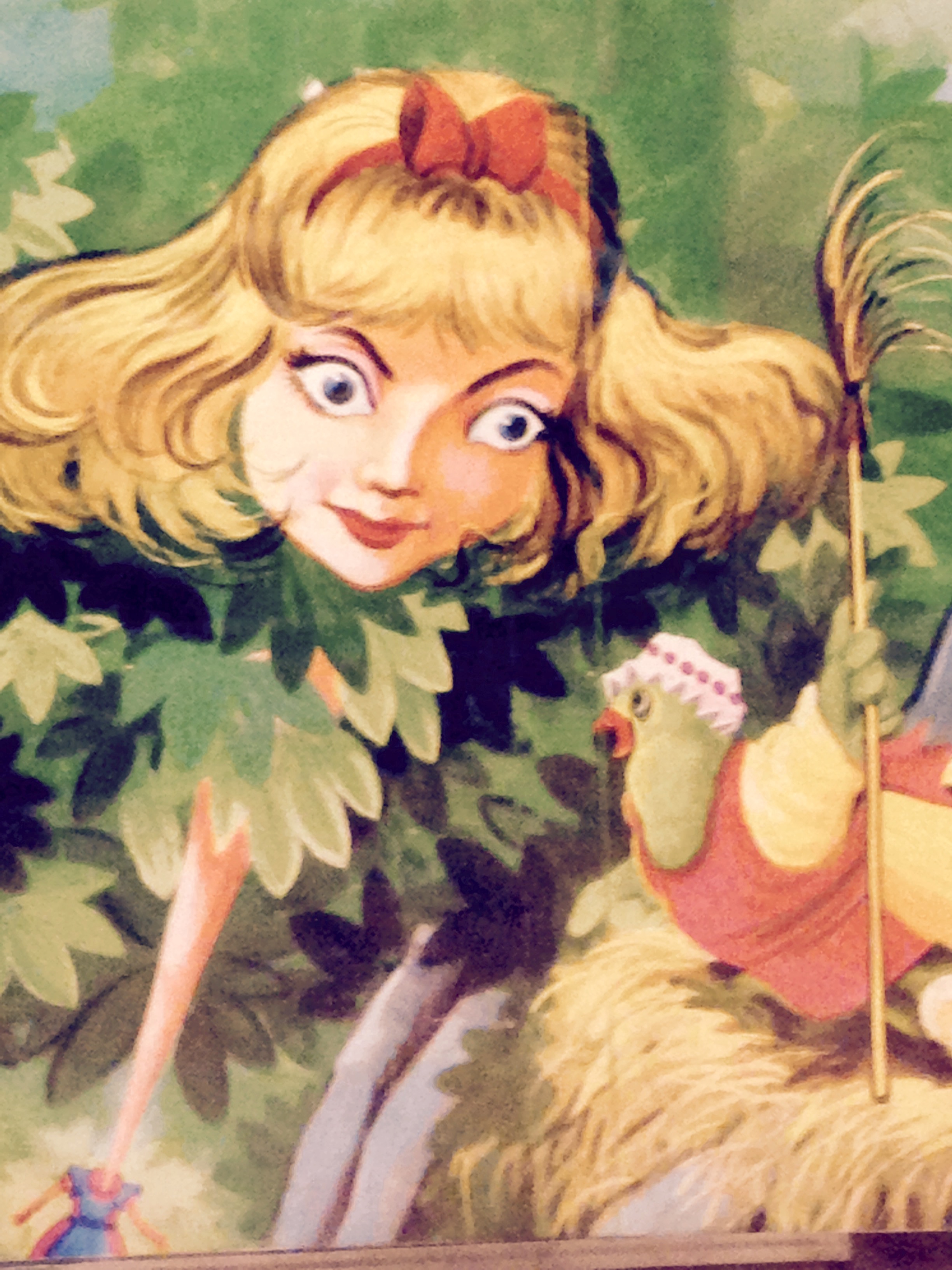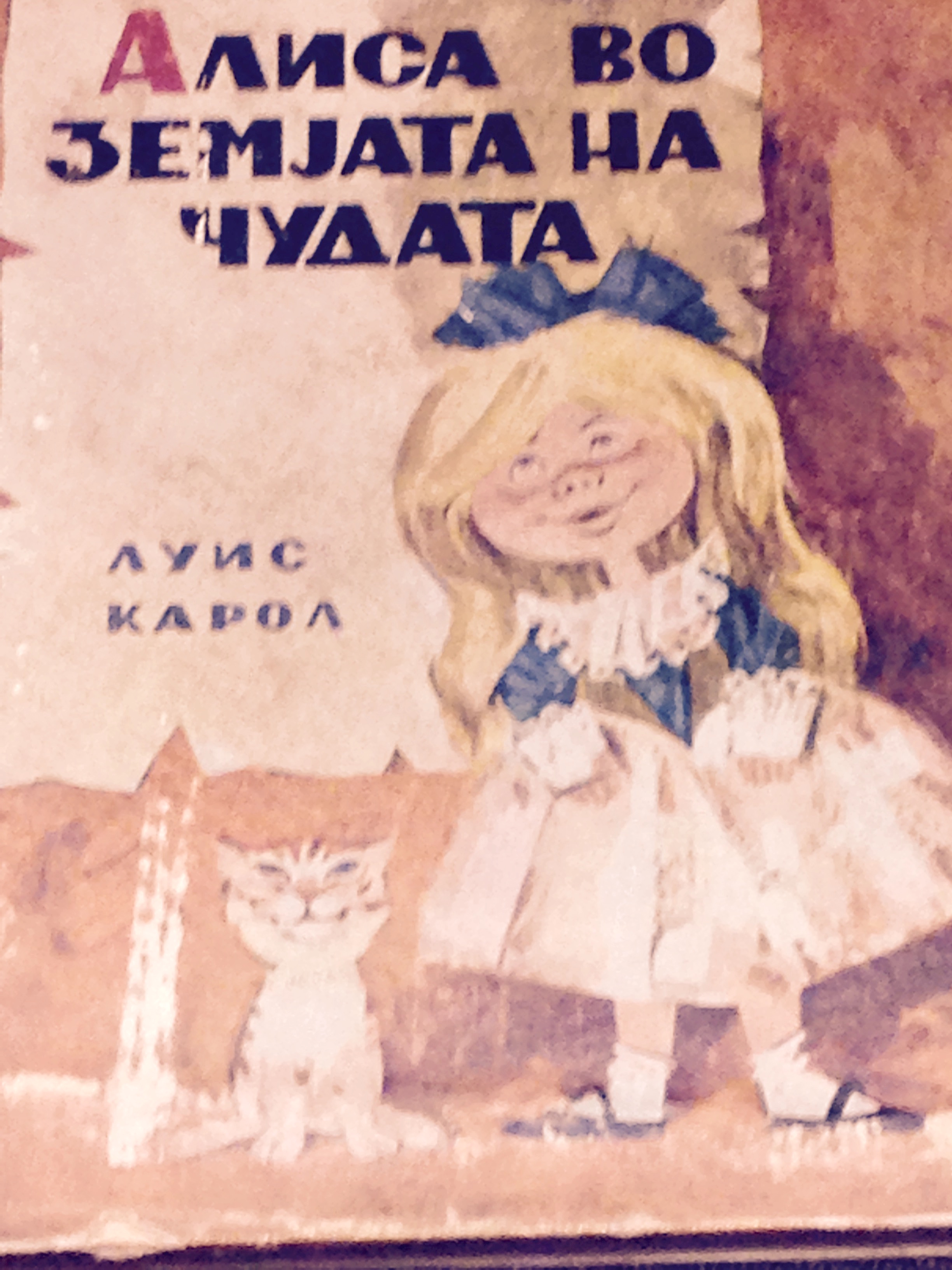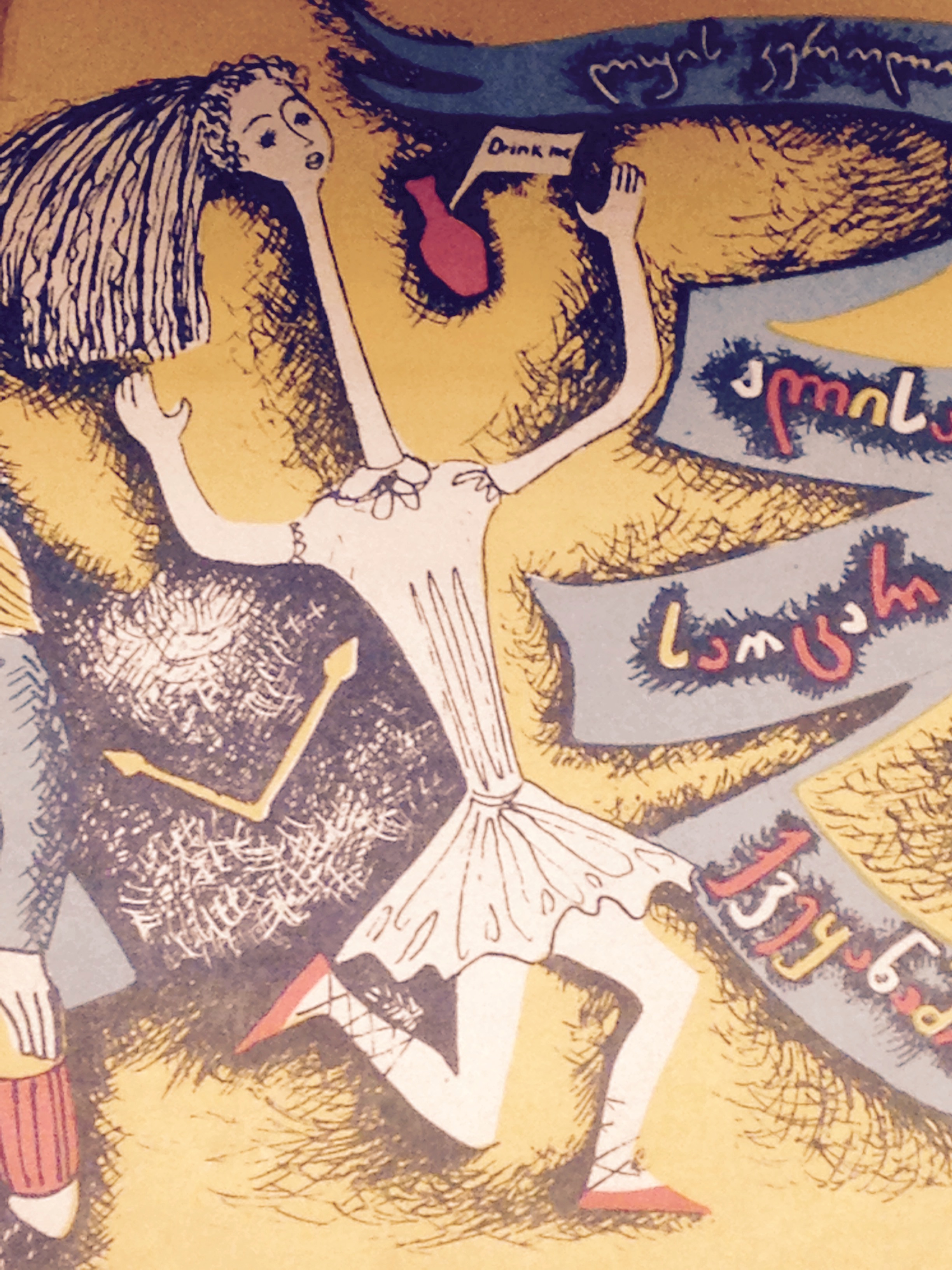【art nouveau and eroticism】
Nonsense Verse
Our Daily Correspondent

West Frisian Alice.
“A language is not complete if there are no translations of the Bible, Shakespeare, and Alice in Wonderland,” the translator Tiny Mulder wrote in 1962. Would that it were so easy! The Grolier Club’s current exhibition is called “Alice in a World of Wonderlands,” and its subject is Alice in Wonderland in translation, on the occasion of the book’s 150th anniversary. Like all the Grolier’s shows, it is free to the public. And at 140 translations—and a bevy of very different Alices—it’s well worth a visit.
There are Braille editions and Frisian editions and Pakistani editions. We see Alice’s adventures rendered in Farsi, in Uyghur, in Hebrew, and in Jèrriais, a Norman language spoken in some of the Channel Islands. Naturally, Carroll’s own Nyctographic language (invented for Alice) is represented, too.
All this is impressive enough, and speaks to the … well, the universality of Charles Dodgson’s book. Nonsense is a common language, and every world can imagine itself frighteningly upended. But as interesting as the show’s scope are the substantial challenges of translation, especially since a nonsense world requires a kind of straight man—a sense world—to function as the opposition. The young mathematician placed Alice in a world that was a stark contrast to the rigors and rules of Victorian England. What happens when you take that Englishness away?
Says a Bengali translator, “The gaps between English and the Indian vernacular are not merely linguistic and cultural. Tailoring the text to fit the requirements of Bengali-speaking region entails a mammoth effort to overcome many differences.”
Of the 1982 Marathi edition, Jaai’s Wonderful Story, the translator explains that “when I transformed Alice into Jaai I taught her not only customs and traditions of this land, but also the popular songs and traditions known to all.” Meanwhile, one Slovenian scholar tells us that readers in her region “have been slow to accept the literary genre of nonsense. Comedy and satire have been more welcome in Slovenian literary history but not nonsense, which has only recently been fully accepted.”
Perhaps it explains the seriousness—even panic—in the faces of some of these Alices. (Then again, that’s visible on the face of Alice Liddell, too.) Nonsense is not an easy export.

Slovakian Alice.

Georgian Alice.
Sadie Stein is contributing editor of The Paris Review, and the Daily’s correspondent.
Search
Categories
Latest Posts
Archer app: New queer dating app for men launches
2025-06-27 04:37Elon Musk can't run for U.S. Vice President
2025-06-27 02:54Nvidia's Digits is a tiny AI supercomputer for your desk
2025-06-27 02:22Popular Posts
A hedgehog blown up 'like a beach ball' was popped in life
2025-06-27 04:36Five Young Women With Prize
2025-06-27 04:22The Prevalence of Ritual: On Romare Bearden’s ‘Projections’
2025-06-27 03:58James Joyce’s Baby Talk (and Swift’s and Lear’s) by Anthony Madrid
2025-06-27 03:509 Tech Products That Were Too Early to Market
2025-06-27 03:50Featured Posts
We tried Sony's new XYN headset: a game
2025-06-27 04:51An Incomplete Biography of Marcel Proust by Liana Finck
2025-06-27 04:42Paramount+ Black Friday deal: $2 per month
2025-06-27 04:28The best TikTok food trends of 2023 (so far)
2025-06-27 03:57The Ultrahuman Ring Air now comes in 18K gold – for a steep price
2025-06-27 02:57Popular Articles
Panthers vs. Falcons 2025 livestream: How to watch NFL online
2025-06-27 03:55The most badass Latin phrases
2025-06-27 03:26Archer app: New queer dating app for men launches
2025-06-27 02:24From the Perspective of the Adoptee: An Interview with Nicole Chung
2025-06-27 02:23Preorder the new Anker Soundcore Sleep A30 earbuds with ANC for $159
2025-06-27 02:16Newsletter
Subscribe to our newsletter for the latest updates.
Comments (9633)
Habit Information Network
A hedgehog blown up 'like a beach ball' was popped in life
2025-06-27 04:50Neon Information Network
The Silence of Sexual Assault in Literature by Idra Novey
2025-06-27 04:43Miracle Information Network
The most badass Latin phrases
2025-06-27 04:34Energy Information Network
The Surprising Story of Eartha Kitt in Istanbul by Hilal Isler
2025-06-27 02:50Evergreen Information Network
Great white shark leaps into tiny boat, fisherman treats it like NBD
2025-06-27 02:22